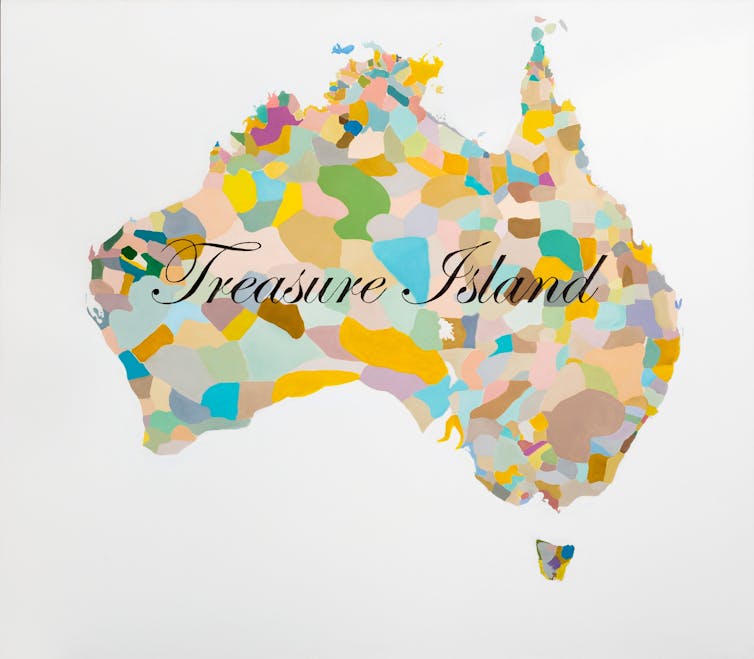Daniel Boyd’s art overturns accepted white Australian history
Daniel Boyd’s solo exhibition Treasure Island, now on at the Artwork Gallery of New South Wales, is a deeply political and personal interrogation of Australia’s colonial historical past.
Boyd is a Kudjala, Ghungalu, Wangerriburra, Wakka Wakka, Gubbi Gubbi, Kuku Yalanji, Yuggera and Bundjalung person, with ni-Vanuatu heritage. His do the job knocks about the apple cart of acknowledged white Australian historical past and provides the tumbled mess of bruised fruit.
For several, the accurate tales of racism, exploitation and violence to 1st Nations people in Australia will not be a shock, but Boyd fees the knowledge with emotion and have an impact on.
A single of the showcased artworks provides a large Aboriginal map displaying numerous language team spots, and with the words and phrases ‘Treasure Island’ across its flank. This refers to the imperial idea of Australia as Terra Nullius, a land of free sources to steal or extract.
Drawing on iconic tales of Robert Louis Stevenson (author of Treasure Island and collector of what Boyd describes as ‘Pacific fetish objects’) and numerous ethnographic pictures from archives, Boyd makes his disruptions.
The works on display replicate the assortment of Boyd’s vital inquiry into the cosmos, patterned navigational maps, Plato’s cave allegory and darkish make a difference in area and historical past.
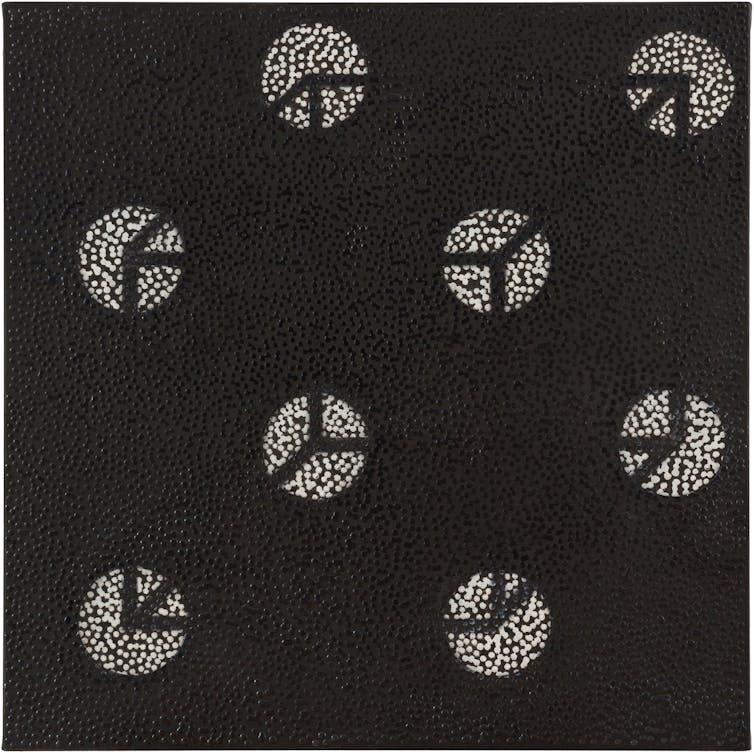
The transference of knowledge
We Connect with Them Pirates Out Listed here (2006) presents the viewer with a common impression of Cook’s to start with landing at Kamay (Botony Bay), in 1770. Boyd re-offers Cook dinner as a pirate, unlawfully stealing unceded land.
In Boyd’s fingers the scene turns into chaotic relatively than messianic. But the stain of electricity is even now there.
The false truth of the matter can be disrupted, but the violence has now been performed. De-colonialism has not nonetheless been attained.
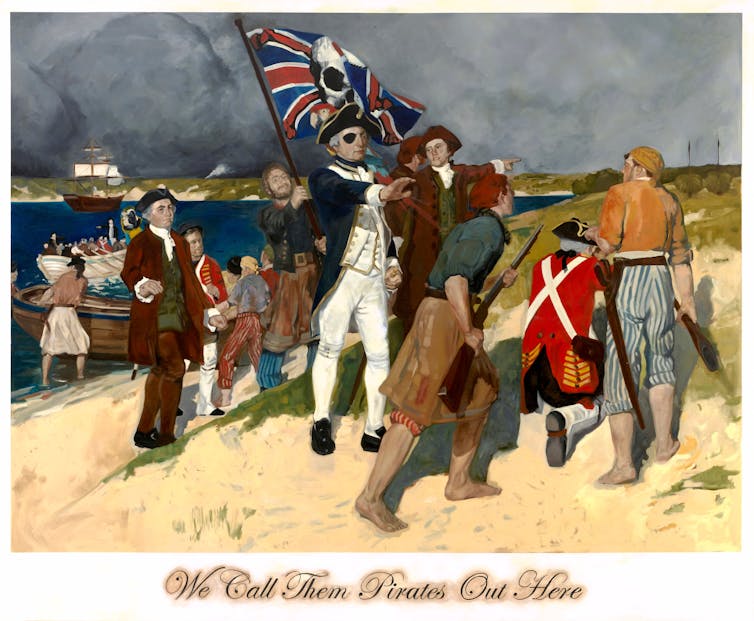
I asked Daniel Boyd if non-Indigenous individuals will ever be able to understand daily life in the similar way that First Nations men and women do – as multiple and complicated, as holistic and related and as poetic? He replied:
when Indigenous people today situate on their own with spot, with the sea, the land and the sky, then that understanding can be transferred.
Boyd’s exhibition is specifically that transference of understanding to audiences. He offers a center place of artworks focused to the period of ‘blackbirding‘ in Australia, where by folks from South Sea Islands had been introduced to Queensland as slave labour to operate on sugarcane plantations.
Read through: Indigenous Arts Criticism: Breaking the silence
Boyd tells me that his have good-wonderful-grandfather Samuel Pentecost was forcibly taken from Malakula Island, Vanuatu, and introduced to Queensland to work for no pay back.
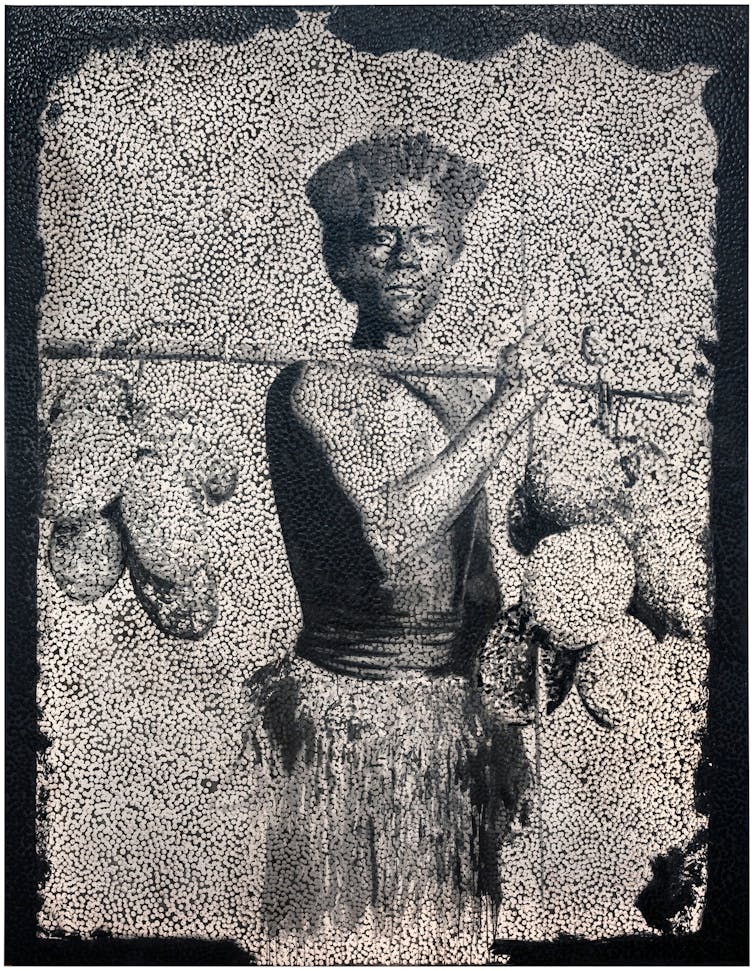
On the backs of slaves
In Key Cures of Slaves, historian Londa Schiebinger writes about slaves remaining tossed into mass graves at the conclude of cotton or sugarcane rows if they died from exhaustion or malnutrition on web site. I’ve study of slaves staying only fed bananas or dumb cane which designed their tongues swell and stopped verbal backlash.
As Boyd tells me, the Queensland economic climate was crafted on the spine of free labour of 1st Nations and Pacific Island peoples. Wages were being stolen and men and women were exploited.
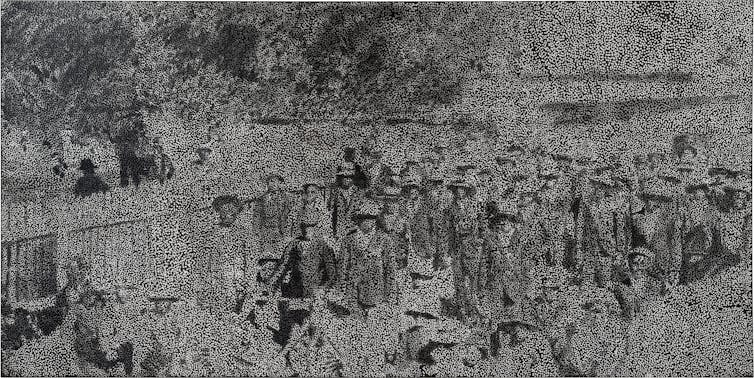
Alongside with domestic servitude, this absolutely free labour established money and revenue for generations of white Australians.
Boyd proceeds these disturbing tales with a painting of an imperial ship, complete of create. The artist tells me that Joseph Banks ‘discovered’ Tahitian breadfruit as a valuable species to feed to plantation slaves, so the breadfruit was transported aboard the Bounty ship to Jamaica, one more web site of plantation slavery.
The brutality continued by way of Australian background and in Boyd’s very own relatives lineage. Samuel’s son, Boyd’s terrific-grandfather, was stolen from his parents up in Mossman Gorge and taken to Yarrabah Mission.
Boyd transfers an impression of Harry Mossman, photographed by anthropologist Norman Tindale, for this exhibition. This is a person of the most unadorned and plain portraits of the exhibition: it has a relaxed, proud and immediate enchantment.
Modifying our emphasis
Boyd’s use of very small glue dots on the surface area of his artworks references standard painting but also functions as lenses. These alter our concentrate and assist us see the genuine stories, painful and sorrowful and shameful as they are.
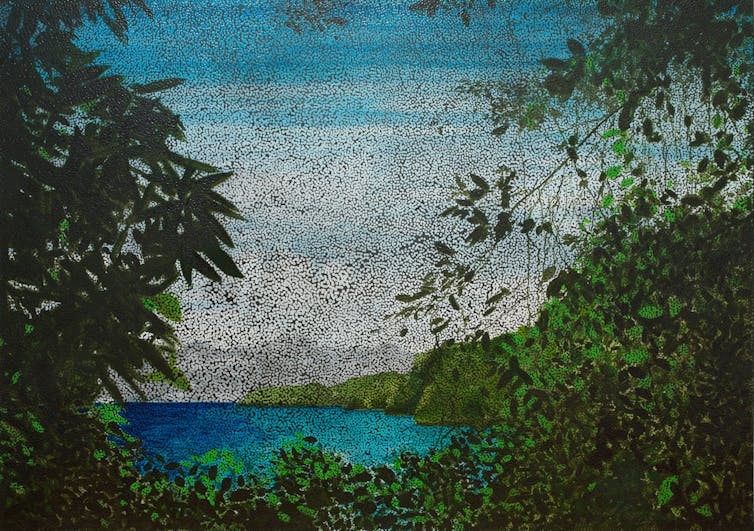
They are emblematic of the way mild (western knowledge) can blind us from what we will need to see (Black truth). The mostly white dots are portals to better see the concealed tales.
Boyd’s artwork dispels white Australian propaganda that erases details about slavery, the stolen technology and the early a long time of white settlement. He encourages audiences to see the correct tales lurking in the shadows.
It’s not simple, but struggling with the truth is the 1st phase to decolonising our Australian background.
Daniel Boyd Treasure Island is at the Artwork Gallery of New South Wales right until January 2023.![]()
Prudence Gibson, Creator and Research Fellow, UNSW Sydney
This report is republished from The Discussion below a Creative Commons license. Read through the original posting.

